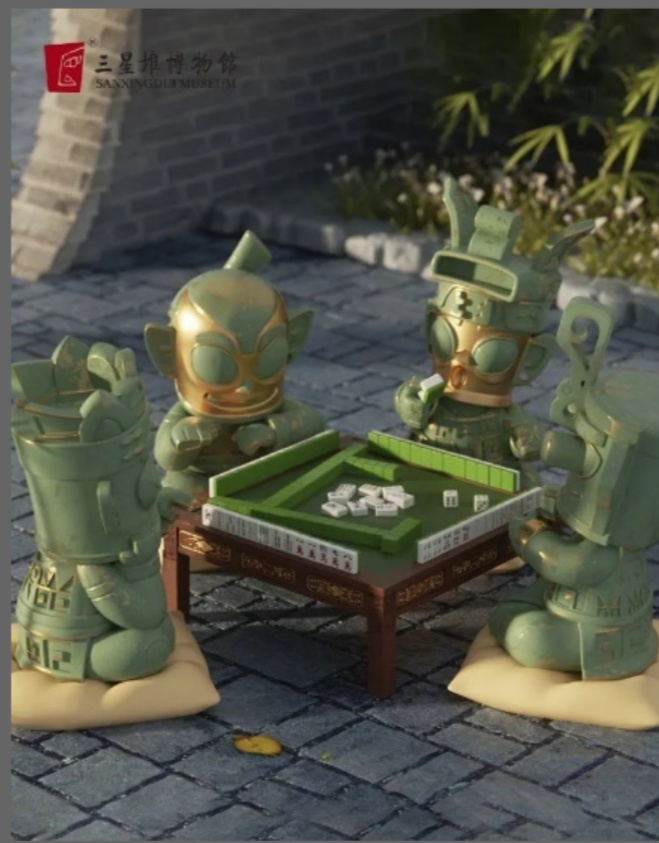The Ultimate Collection of Cultural and Creative Products
What are cultural and creative products?
"Cultural and creative products" refer to creative products that integrate cultural elements into modern design and commercial products. They typically combine traditional culture 🏛️, modern design 🎨, and commercial value, aiming to convey cultural connotations and artistic beauty through innovative approaches.

Characteristics of the Cultural and Creative Products Market:
- Continuous Market Expansion: The market size for cultural and creative products in China is continuously growing. Products with unique cultural connotations and artistic value are attracting an increasing number of consumers. For example, in the first three quarters of 2023, Juye County in Shandong sold over 900,000 paintings and calligraphy works, with a total output value exceeding 1.6 billion RMB, setting a new historical record.
-
Diversified Consumer Demand:
- High Purchase Intent: Market research shows that 95.5% of consumers are willing to purchase cultural and creative products.
- Varied Uses: The main purposes for purchasing cultural and creative products are "collection and display" and "daily use."
-
Age, Gender, and Regional Differences:
- Post-2000 Generation Dominance: Consumers born after 2000 are the main force in cultural and creative product consumption, accounting for 49.8%.
- Female Consumers: Women make up 58.2% of the cultural and creative product consumer base.
- Significant Presence in Lower-Tier Cities: Consumers in second-tier, third-tier, and lower cities also play an important role.
-
Relatively Conservative Consumption Concept:
- Spending Range: Over 70% of respondents have a consumption range of below 500 RMB, with the 100-500 RMB range being particularly popular.
- Integration with Various Elements:
- Customization for Local Demands: To cater to the diverse needs of different regional groups, some areas combine traditional painting and calligraphy techniques with intangible cultural heritage crafts such as tuanshan (circular fans), qipao (cheongsams), stone carving, and painted eggs, creating a wide range of unique cultural and creative products. For example, farmers and artists in Juye integrate painting techniques with intangible cultural heritage to produce cultural products featuring meticulous peony designs.
-
Digitalization Trend:
- Diversification and Innovation: Driven by digitalization and technological innovation, the cultural and creative product industry is moving towards diversification and digitalization. This includes the development of digital cultural products and the use of the internet for promotion and sales.
-
Strong Regional Characteristics:
- Local Cultural Resources: Different regions rely on their cultural resources and advantages to form cultural and creative industries with distinct local characteristics. For instance, Guilin is one of the largest painting and calligraphy markets in China, while Juye County in Shandong is the largest base for meticulous peony painting creation in the country.
Cultural and Creative Products Facing Challenges:
- Intense market competition and product homogenization issues.
- Technological bottlenecks.
- Copyright issues.
- Consumer trust.
Therefore, industry professionals need to continuously innovate and improve product quality and uniqueness to meet the ever-changing demands of consumers.
Characteristics of Cultural and Creative Products::
- Cultural Heritage: Cultural and creative products often draw inspiration from traditional culture, including elements of history, folklore, literature, and more.
- Creative Design: They feature imaginative designs that are modern and unique.
- Commercial Value: They possess both artistic and practical value, making them marketable and saleable.
Categories of Cultural and Creative Products
Graphic Design Cultural and Creative Products:
- Umbrella (Sunshade)
- Cultural T-shirt (Family Matching Outfits)
- Cultural and Creative Drinkware

-
Children's Puzzles and Picture Books
- Puzzles combined with museums and tourist attractions are quite common, but there are relatively few stores on JD.com. Prices range from 50 to 300 RMB.
-
Museum Cultural and Creative Products
- Museum cultural and creative products should serve as a bridge between the public and museums, effectively using the internet to promote excellent traditional Chinese culture and employing various forms to tell the stories of cultural relics. This helps to bridge the gap between cultural relics and the public, fulfilling the cultural consumption needs of the audience.
- Major IPs include “Palace Museum’s New Arrivals” and “Sanxingdui.”
- Products include woven bags, watches, earrings, and jewelry.

3D Cultural and Creative Products
- Figurines
- Paper-cut Lamps
- Badges
- Ornaments
- Miniature Landscape Lights
- Necklaces
- Bracelets
What are the main types of consumers for cultural and creative products?
- Specialty Souvenirs: Design items such as badges, keychains, and postcards that feature distinctive characteristics of the scenic area, allowing visitors to take home a unique memory.
- Cultural Experience Products: Offer handmade crafts and traditional skill experiences related to the local culture of the scenic area, allowing visitors to gain a deeper understanding of the local culture.
- Limited Edition Items: Release limited edition stationery, collectibles, and other products related to the scenic area to increase visitors' purchasing desire.
- Themed Apparel: Create clothing items such as T-shirts and hats with elements of the scenic area, turning visitors into mobile ambassadors for the area.
- Family-Oriented Products: Offer cultural experience kits, children's picture books, puzzles, and other items aimed at family visitors, allowing children to participate as well.
Pricing of Cultural and Creative Products
- Umbrella (Sunshade): 120 RMB+
- Cultural T-shirt (Family Matching Outfits): 100 RMB+
- Ceramic Mug: 100 RMB+
- Children's Puzzles and Picture Books: 50 - 300 RMB
- Museum Cultural and Creative Products: Prices vary widely depending on the item and museum, generally ranging from 50 to 500 RMB or more for specialized or limited edition items.
How Cultural and Creative Products Can Address Copyright Issues
- Obtain Legal Authorization: Ensure you obtain formal authorization and licensing from the original creators or rights holders before using copyrighted materials, designs, or trademarks.
- Use Public Domain and Open License Resources: Opt for materials that are in the public domain or use resources under open license agreements (such as Creative Commons), which are generally not subject to copyright restrictions.
- Create Original Content: Aim to create original designs and works, avoiding direct copying or adaptation of existing protected content.
- Conduct Thorough Copyright Checks: Perform detailed copyright and trademark checks during the product design and production stages to ensure no infringement of existing intellectual property rights.
- Consult Legal Professionals: Seek the assistance of intellectual property lawyers or legal advisors for professional advice and guidance when facing complex copyright issues.
- Clearly Attribute and Cite Sources: When using authorized materials, follow licensing agreements to properly attribute and acknowledge the original creators.
- Address Infringement Complaints: If you discover unintentional infringement of others' intellectual property rights, take prompt action to rectify the situation, including ceasing the infringing activities, withdrawing infringing products, and negotiating solutions with rights holders.
The cultural and creative customization sector holds significant potential for growth. As consumer demand for personalization and uniqueness continues to rise, customized cultural and creative products can effectively meet these needs while attracting target audiences through innovative design and cultural elements. As long as copyright laws are strictly followed during the design and production processes, and the products maintain high quality and originality, the cultural and creative customization sector will offer ample business opportunities and expansive development prospects.